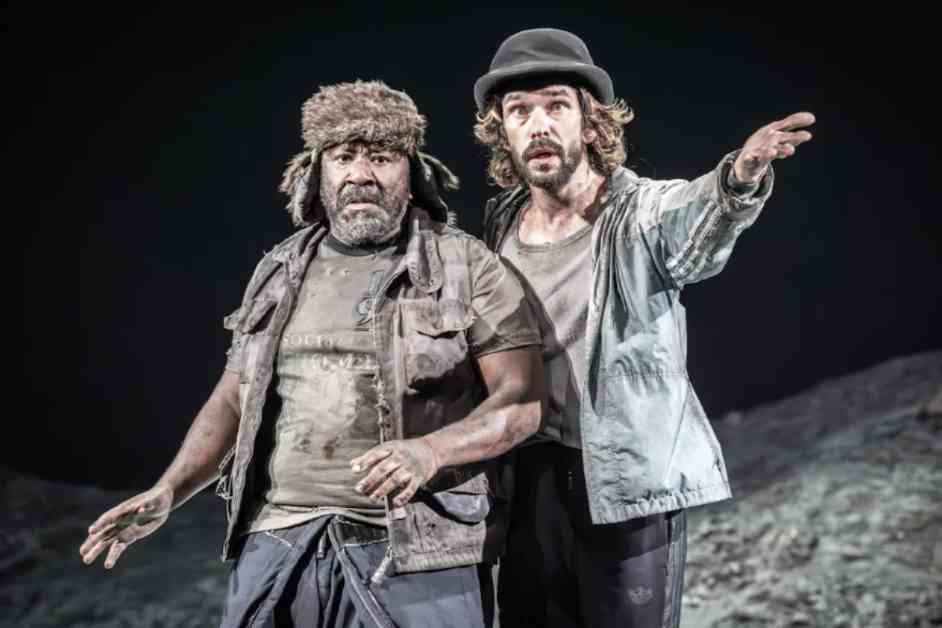Exploring the Depths of Samuel Beckett’s Waiting for Godot
In the heart of London’s Theatre Royal Haymarket, audiences are treated to a captivating rendition of Samuel Beckett’s iconic play, Waiting for Godot. With a star-studded cast led by the talented Ben Whishaw, the production delves deep into the existential themes that have made this play a timeless classic.
The Enigmatic World of Vladimir and Estragon
At the core of Waiting for Godot are the characters of Vladimir and Estragon, portrayed with finesse by Lucian Msamati and Ben Whishaw, respectively. These two individuals, bound together by a sense of shared suffering and existential dread, navigate the desolate landscape of Beckett’s world with a blend of humor and despair.
Vladimir, played by Whishaw, embodies a sense of perpetual hope in the face of futility, balancing moments of levity with profound introspection. His interactions with Estragon, portrayed by Msamati, showcase the delicate balance between camaraderie and conflict that defines their relationship.
The Role of Pozzo: A Study in Power Dynamics
As the enigmatic and domineering Pozzo, Tom Edden commands the stage with a presence that is both unsettling and mesmerizing. His treatment of the hapless Lucky, portrayed with haunting intensity, serves as a stark reminder of the power dynamics at play in Beckett’s universe.
Through Pozzo’s interactions with Vladimir and Estragon, the audience is confronted with the harsh realities of a society structured by hierarchy and control. Edden’s portrayal of this complex character adds depth and nuance to the production, highlighting the themes of submission and domination that permeate the play.
Modern Interpretations and Contemporary Relevance
In a nod to modern sensibilities, the production of Waiting for Godot incorporates elements of diversity and inclusion that add a fresh perspective to Beckett’s timeless work. The casting of Black actors in key roles, as well as the inclusion of a diverse ensemble, serves to underscore the universality of the play’s themes.
Costume designer Rae Smith’s choice to outfit Whishaw in colorful trainers offers a subtle contrast to Beckett’s minimalist aesthetic, while Amy Ball’s casting decisions challenge traditional notions of identity and belonging in the world of the play. These modern touches not only breathe new life into Waiting for Godot but also invite audiences to reconsider the play’s enduring relevance in today’s society.
As audiences flock to the Theatre Royal Haymarket to witness this poignant and thought-provoking production, it becomes clear that Waiting for Godot continues to resonate with viewers of all backgrounds. Through its exploration of existential angst, human connection, and the search for meaning in a seemingly indifferent world, Beckett’s masterpiece remains as searingly relevant today as it was when it first premiered.
In conclusion, Waiting for Godot, with its stellar cast, innovative staging, and profound themes, stands as a testament to the enduring power of theatre to illuminate the complexities of the human experience. As the final curtain falls on this mesmerizing production, audiences are left with a renewed sense of introspection and a deeper appreciation for the enduring legacy of Samuel Beckett’s timeless masterpiece.












